In this article, we will look at various ways to clean up the disk and free up space on it in any operating system Windows XP, 7, 8.1, 10.
1. Where does disk space go?
In the process of computer operation, system updates, installation of programs, visits to sites and other activities, a lot of unnecessary files accumulate on the disk, which are often called garbage or junk. In addition, we often download some files ourselves, and then, when they are no longer needed, we forget about them.
Extra files not only take up disk space, but also slow down system performance. The disk takes longer to search for the files it needs, and some of them can take up RAM space and use up processor resources. In addition, viruses often like to sit in temporary files.
For stable, fast and reliable operation of your computer, you must keep the disk clean and tidy. Nowadays, the problem of lack of space on SSD disks is also urgent, the volume of which is very limited.
In this article, we will try to comprehensively solve the problem of insufficient disk space. To achieve high results, we recommend that you read the entire article and follow all the tips in the order in which they are presented.
2. Removing unnecessary programs and games
First of all, remove all programs and games you no longer need. This will not only free up disk space, but also speed up the system.
Press the key combination "Win + R", type "appwiz.cpl" and press "Enter" or use the "Uninstall Programs" shortcut from the "" section.
In the window that opens, carefully review the list of programs, games installed on you and remove all that you are unlikely to use in the near future.

To uninstall a particular program, right-click on it and select "Uninstall".
Do not delete what you do not understand the purpose of or if you are not sure.
After that, manually find and delete the folders with the saved games of the deleted games, as they can take up a lot of space. It is easy to find out where the save of this or that game is by searching on the Internet.
Many online games also save their distributions (installation packages) during updates that are no longer needed, but take up a lot of space. For example, the Mail.Ru game center saves distributions in the Distrib folder, and the World of Tanks game in the Updates subfolder. Files in such folders can take tens of gigabytes and can be removed painlessly.
3. Search and delete unnecessary files
It often happens that some old unnecessary files take up a lot of disk space, but we have forgotten about them and do not know where they are. In order to find them, I recommend using the "TreeSize Free" utility, which you can download in the "" section.
Once launched, the program will scan your disk, determine the size of files, folders and sort them by size.

This way, you can easily determine which folder contains the files that take up the most space. Delete any files you no longer need. If you think you may need any of them, write them to disk. The choice of the drive for scanning (C, D, etc.) is done in the "Scan" menu.
4. Transferring user files and folders
If you have a second drive or partition (for example, drive "D"), then first of all transfer to it all files from the desktop and user folders such as "My Documents", "My Music", "My Videos", etc. ., since they are all physically located on the "C" drive.
You can move files manually by creating folders for them on another disk or partition in advance. But it is more correct to change the location of the user's folders by means of the operating system. Then all new files that you or any programs will save on the desktop and in the user's folders will automatically go to another disk partition without causing the system partition to overflow.
4.1. Transferring user folders in Windows 7, 8.1, 10
Go to the "C: \ Users \ Name" folder.

Right click on the "My Documents" folder and go to the "Location" tab.

Replace the drive letter with the one where you want to move the folder (for example "D") and click "OK".

Agree to move the files, and then repeat the steps for the Desktop folder and the rest of the user's folders.
4.2. Transferring user folders in Windows XP
In Windows XP there is no function of automatic movement of user folders and we will use a special utility "XP Tweaker", which you can download in the "" section.
Install the utility and run it. Then, in the left pane, select the Windows XP section and go to the System Folders tab.

Select the "My Documents" folder with the mouse, change the drive letter to the one where you want to move the folder (for example, "D") and click the "Change" button.

Follow the same steps for the folders "My Pictures", "My Music", "Desktop".
After that go to the folder "C: \ Documents and Settings \ Name".

And manually move the My Documents and Desktop folders to the new location D: \ Documents and Settings \ Name.

5. Disk cleanup using Windows
All versions of Windows have a Disk Cleanup feature. It can be used to clean up any disk partition (C, D, etc.), but it is most effective for cleaning the system partition (drive "C"), since it is on it that most temporary files are stored.
Right-click on the C drive and select Properties.

Click the Disk Cleanup button.

Click the "Clean up system files" button (in Windows 7, 8.1, 10).

Check all the boxes and you will see how much space will be freed by deleting temporary files.

The size of temporary files can be up to 5-10 GB. Click the "OK" button and all temporary files will be deleted.
6. Deleting the hibernation file
The hibernation file (hiberfil.sys), which can be close to RAM size, is located on the C drive and is used for sleep mode. If you do not use this mode, and each time you turn on and off the computer in the usual way, then this file can be removed painlessly, since it takes up a lot of space.
The system will not allow you to manually delete this file, and even if you do it using a special utility for deleting files, the system will create it anew. Therefore, for the correct deletion of the hibernation file, you need to disable sleep mode.
Run Command Prompt as Administrator and run the following command:
Powercfg -h off
After that, the system itself will delete this file and will no longer create it.
If you do not know how to work with the command line or do not want to bother, you can download the command file "Deleting the hibernation file" in the "" section.
You just have to right-click on it and run as Administrator (except for Windows XP).

7. Disable or resize the paging file
The paging file (pagefile.sys), which can be one and a half times the size of the RAM, is located on the C drive and is used by many programs to compensate for the lack of RAM.
With a sufficiently large amount of RAM and a small "C" drive (for example, SSD), many enthusiasts advise disabling the paging file.
In the window that opens, go to the "Advanced" tab and in the "Performance" section, click the "Options" button.

In Performance Options, go to the Advanced tab and click the Change button.

Uncheck "Automatically select paging file size", set the checkbox "No paging file" and click "OK".

After restarting the computer, the paging file will be deleted and a lot of space will be freed up on the "C" drive.
But keep in mind that the work of the system is tightly tied to the paging file, and some programs may not even have enough 8 GB of RAM. Therefore, out of memory errors may start to appear.

You can try to completely disable the paging file if you have 16 GB or more of RAM, but still I would not recommend doing this.
A-Data Ultimate SU650 120GB Hard Drive8. Disable System Restore
The restore service makes backups of system files and stores them in a special hidden folder, which can take up a lot of disk space. At the same time, the built-in recovery tool does not always work correctly, and viruses like to hide in the folder with backups.
Press the key combination "Win + R", type "sysdm.cpl" and press "Enter" or use the shortcut "System Properties" from the "" section.
In the window that opens, go to the "System Protection" tab, select the "C" drive and click the "Configure" button.

Set the "Disable system protection" checkbox and click "OK".

After that, all backup copies of system files will be deleted and additional disk space will be freed up. In this way, you can free up 5-10 GB of valuable space on the "C" drive.
9. Disable the recycle bin
You can disable the Recycle Bin on drive "C" so that it does not take up space on it. To do this, right-click on the trash can icon and select "Properties".

Set the "Shred files immediately after deletion" option for the "C" drive and click "OK".
After that, if you delete large files from the folders with distributions of games or any others, then they will not go to the trash and will not take up space on the "C" drive.
10. Clearing the backup storage
To clear the storage of backup copies of system files in Windows 8, 8.1, 10, I recommend running the following command at the command prompt as Administrator.
Dism.exe / Online / Cleanup-Image / StartComponentCleanup
For this purpose, you can also download the "Clean up backup storage" batch file in the "" section and run it on behalf of the Administrator.

11. Removing temporary folders
You can painlessly delete temporary folders left after installing some drivers and programs:
C: \ AMD C: \ ATI C: \ CONFIG.MSI C: \ Intel C: \ MSOCache C: \ NVIDIA C: \ SWSetup
12. Automatic cleaning and disk acceleration
There are special utilities for automatic disk cleaning of temporary files. One of the best I recommend is.
It can be configured to clean up temporary files every time the computer boots, which will maintain free space on the C drive, and will also provide a little extra protection, since temporary folders are a favorite place for viruses.
But it is necessary to correctly configure it, otherwise this utility will clean you not what you need, but will leave what needs to be removed. Since the utility's settings are quite extensive and it has many additional useful functions, I decided to talk about it separately in the next article.
13. Links
HDD A-Data Ultimate SU650 240GB
Transcend StoreJet 25M3 1 TB Hard Drive
Western Digital Caviar Blue WD10EZEX 1 TB Hard Drive
» How to quickly and efficiently clean a Windows XP system?
How to quickly and efficiently clean a Windows XP system?
In the process of each, without exception, installation and removal of programs, using an object such as a recycle bin, some changes are made in the computer's operating system. Such transformations are not always positively reflected in the Windows XP registry. Moreover, in the process of working on a computer, its system slowly but surely accumulates a large number of unused and unclaimed files.
All this can lead to a slowdown of the entire system as a whole, which ultimately will lead to a complete loss of Windows XP functionality. It is for this reason that in order to extend the life of the operating system, it is required to carry out a process such as cleaning after certain periods of time.
It is known that you can clean up the computer system manually by using the built-in tools of Windows XP, but this is quite painstaking work that will take a lot of time, and also requires certain skills and knowledge. Fortunately, at the moment, quite a few programs have been developed and are successfully used that make it possible to automatically complete a process such as cleaning Windows XP, that is, all its system folders and registry. In this way, you can not only clean, but significantly increase the efficiency of the entire system and optimize the computer as efficiently as possible.
CCleaner program

One of the programs that is able to effectively clean the system is CCleaner. The utility is downloaded completely free of charge, therefore it is available to any user of a personal computer, moreover, it is ideal for Windows XP.
The main functions of such a program include:
- cleaning the system registry of the computer;
- cleaning the file system;
- control over installed applications, as well as various objects downloaded automatically.
It should be noted that in order to avoid possible problems in the process of cleaning the registry, it is recommended to use a special built-in system for creating insurance copies of the Windows XP registry before starting the cleaning process.
So, to start the process, you need to download the program, its installation is simple, therefore it does not require special attention. It is important to note that the installation process simply prompts you to automatically install the Yahoo search toolbar. If this panel is not needed, you should uncheck this item. After installation and subsequent launch of the program, you can see the corresponding window.
System cleaning process
 As a rule, to clean the system, you just need to delete unnecessary files, but the Recycle Bin is not suitable for this. The "cleaning" section allows you to find and delete those objects that are no longer needed on a particular computer. Very often these are just temporary files that belong to the Windows XP operating system. The working area of the module performing cleaning consists of two fields - left and right. In the left part of the window, you can enable or disable the cleaning process for different areas of programs that the utility supports, and the right one is usually empty during the startup process. While the program is running, the right side of it displays information about the progress of the cleaning process.
As a rule, to clean the system, you just need to delete unnecessary files, but the Recycle Bin is not suitable for this. The "cleaning" section allows you to find and delete those objects that are no longer needed on a particular computer. Very often these are just temporary files that belong to the Windows XP operating system. The working area of the module performing cleaning consists of two fields - left and right. In the left part of the window, you can enable or disable the cleaning process for different areas of programs that the utility supports, and the right one is usually empty during the startup process. While the program is running, the right side of it displays information about the progress of the cleaning process.
Registry cleaning
In order to properly clean Windows XP, it is necessary to put the system registries in a certain order. The program discussed in this article does an excellent job of this. Its cleaning module allows you to quickly find and correct all erroneous entries in the system registry, the presence of which affects the speed of the entire system as a whole, and delete them. It is worth noting that in the workspace of the module it is possible to select areas of the registry that are necessary or, conversely, do not need to be processed. In order to start looking for a problem in the registry, you just need to click the "search for problems" button. Despite the fact that CCleaner is a very reliable program, it is always worth keeping backups before performing the cleaning procedure.

If during the analysis of the registry more than one error was detected, which usually always happens, the program will ask for an action that must be taken, and this is done for each error it finds.

Program management
The CCleaner program has a special section "Service", which is designed to remove programs that are installed on the computer, and is also able to configure the list of applications that are automatically launched during the boot process of the operating system.
Particular attention in the process of cleaning the system deserves the removal of unnecessary programs. In a special subsection "Uninstall programs" usually displays a list of different applications that have been installed on the computer over the entire time. In the standard deletion system, through such a thing as the trash can, which is present in the operating system panel, some objects may not be displayed, since such a function is provided by some developers. But unlike Windows, CCleaner is able to display all programs that have been installed on a computer at one time or another by using the installer.

There is another important feature of the CCleaner application - it is a special function associated with removing programs that were uninstalled incorrectly through an application such as the trash can. As a rule, this happens in a situation where the standard uninstaller of one or another program to be removed did not work quite correctly, and also if the program files were manually deleted by the user without using it. In order to uninstall a program using your own installer, select it in the CCleaner window and start the uninstallation process.
If for some reason the uninstaller did not work, you will need to click the "Remove" button. In this situation, the utility will find and delete not only the file of this program from the disk, but also all the traces left from it in the registry of the personal computer. It is important to remember that the Uninstallation mode in CCleaner is ideal only for uninstalling those applications that cannot be uninstalled with the usual standard means.
Another rather interesting function of the cleaning program is the ability to rename any reinstalled program. In some situations, this function is extremely necessary.
With regard to such a process as autoload, this is one of the most useful partitions in the system. In order to properly clean the operating system, it is required to reduce the number of downloaded programs to the minimum indicators at an automatic level. This section is intended for managing the list of programs that start automatically when the system boots. During the installation process, quite a lot of programs create special autoloading modules designed to automatically check for updates via the Internet, and often the user does not even know about it, and the basket will not help here.
Such applications greatly slow down loading, consume a certain amount of traffic, reduce processor power, and also take up a certain amount of RAM on a personal computer. It is not so easy to find and disable such automatically launched programs on your own, even when using the usual mechanisms. This is based on the fact that many are designed in this way to mask their automatic activities. CCleaner is designed in such a way to see and immediately disable those programs that were loaded automatically and are completely unnecessary.
System Restore
The latest version of the cleaning program has a new section that allows you to manage special checkpoints for the recovery of the Windows XP operating system. In fact, these are archives of a special format, which are created by the operating system at an automatic level and, as a rule, take up a lot of space.
Configuring CCleaner
In the "Settings" section of the described utility, you can define the rules and parameters of the application action associated with the cleaning process. For example, in a special subsection "coockie files", if necessary, you can configure similar files of those sites that you want to delete, or perform the opposite actions with sites that you want to leave. As a rule, experts recommend deleting adware cookies, which can be erased without much regret, but this should not be done with frequently used sites.

Conclusion
The CСleaner utility makes it possible to significantly speed up and also effectively stabilize the work of a personal computer by completely removing files from it that are not used by any other programs, but at the same time take up disk space, and, no less important, take up system resources.
To maintain optimal system performance, it is recommended to run the system at least once a week, then the PC will constantly work stably and quickly. At the same time, it is recommended to use the program for the process of defragmenting the hard disk. All this will ensure the efficient operation of the entire system as a whole.
When working with Windows XP, a lot of temporary files appear on your hard disk, which must be regularly deleted in order to free up additional space on the storage medium. To do this, the operating system provides a special utility that will automatically delete all unnecessary files from the computer and free it from garbage.

Open the start menu, from the service submenu, call the disk cleanup command, a window for working with the application will appear on the screen. At the top of the window, Windows XP displays a message about the amount of disk space that can be freed by deleting temporary files. Check the box next to the file categories you want, such as temporary files or files placed in the trash, and you can see what is being deleted. Select one of the items in the list and information about the file type will appear at the bottom of the window. Some deleted files can be viewed, to do this, select the trash item in the list, click the View files button, the contents of the trash folder will be displayed on the screen, in order to clear additional system components. Click on the additional tab, from this tab you can remove Windows XP components, unused programs or old restore points, after all the parameters are specified, click OK and Windows XP will delete unused files, freeing up additional disk space.
Just in no case do not format the hard drive, since all the information recorded on it will be deleted and lost, and in order to restore the data after formatting, you will have to give it to a service center.

The topic of our lesson is to quickly and easily clean up the C drive. It is far from a secret that many people like to store files on their computer in order to have quick access to them. But sooner or later you are faced with the problem of lack of free disk space. Next, we will consider the simplest, but therefore no less effective ways to clean up the computer's internal memory.
Disk Cleanup C. Video tutorial.
First, watch the video tutorial, and after that, to consolidate the material, you can read the article.
How to clean computer memory from unnecessary files manually?
No matter how trite it sounds, but first of all you should Empty trash... For example, at the very beginning of my acquaintance with the computer, I did not know that simply deleting files is not enough to completely get rid of them. Then you also need to empty the Recycle Bin, into which they are carefully placed by the operating system in case you deleted something by accident or change your mind and want to restore some files.

- So, if we are talking about deleting a specific file, right-click on it, select Delete and approve.
- After that, right-click on the Trash, select Empty Trash and also approve.
By the way, there is another way to delete files, which does not require deleting them from the Trash again. Select the file with a single left click on it, and then simultaneously hold down the Shift + Delete keys. A window appears with a question, answer Yes.

The file was deleted from the computer, bypassing the Trash. On the one hand, it is quite convenient and fast, on the other hand, this method requires caution: you can not on purpose, but automatically delete the file permanently, making it impossible to restore it from the Recycle Bin. So take this method into service only if you are firmly sure that you are deleting completely unnecessary files and exclude the possibility of error.
Cleaning the disk in Windows from garbage. We remove all unnecessary at once.
So, we looked at how to delete individual files manually, but this is still not enough to. The fact is that a hard disk, also known as a hard drive, is usually split into several local disks. As a rule, this is the system C drive and one or more local drives. So, on the system disk, in addition to the operating system itself, many temporary files are stored that are automatically created to ensure the performance of various programs. Cleaning drive C from debris, is needed not only to free up disk space, but also to improve system performance. Therefore, if you want to ensure maximum performance of your computer, clean the C drive from debris at least once a week.
Now let's look directly at how to clear computer memory.
1. To do this, open My Computer and right-click on the local disk, then select Properties

2. Select the Disk Cleanup item

The problem with garbage on the computer brings inconvenience from year to year to almost all users. In this article, I will show you how to clean your Local C drive.
If your PC has become noticeably slower, it will be useful for you to clean up unnecessary files and thereby speed up your computer.
To find out how to do it yourself correctly, read the entire article or watch the video at the end of the article.
Introduction
Many people wonder about the slow computer performance and spend hours looking for information on the Internet. One of the main reasons is the clutter of the Local Disk C. The slower the PC starts to work because it is on this disk that the operating system is located, which is responsible for all the actions performed.
As a result of the clogging of the operating system files, we begin to notice errors in the work processes and slow response of programs. Imagine a real life example: you are running in sneakers, athletic shoes to improve your physical fitness. Now take, throw a sack of potatoes on each shoulder and try to run, how? I think the difference will be noticeable, the same will be the same on the local disk, while the empty one works quickly, a lot of garbage has accumulated and began to work slowly.
That is why you should at least sometimes put things in order on your PC and delete unnecessary files.
A clean desktop and its impact on Local C drive
Dear friends, first I want to draw your attention to the desktop of your PC, because many do not understand how to use it correctly. And its correct condition is its purity.
All files and folders located on the desktop are written to the memory of the local drive C, so think ten times before throwing music albums and new films on it, work right now, transfer all data from the desktop to the Local drive D or other available it is significant will facilitate the operation of the operating system and free up the memory of the C drive. If you need quick access to some programs or files, make shortcuts for them so it will be right.
Clean up temporary, unnecessary files from your computer manually
Before proceeding to this stage, you need to understand a little that when any programs are running on a computer, the operating system creates temporary files, even when you just surf the Internet, some of the data is recorded as temporary files.
This is actually done to speed up the work, how? Let's say you opened the site classmates, the system wrote several large pictures from the site to the folder with temporary files, and the next time you go to classmates, the computer does not download information from the site server, but takes several large pictures from the temporary files previously recorded in the folder.
Yes, this is useful, the folder with temporary files "swells" to such an extent that it starts to slow down the PC and clogs up most of the memory of the Local drive C, which sometimes also leads to errors.
To delete these temporary files, you just need to go to the desired folder with these same temporary files and delete everything from there. By the way, do not worry, there are no system files and you will not delete anything you need, feel free to go in and clean.
To do this, go to the directory:
My Computer / Local Disk C / Windows / Temp

We went into this folder, circled all the files and deleted, emptied the trash.
Analysis and removal of old, unnecessary programs, games and files
This section can be divided into two stages. The first one is quite simple, it includes removing old already unnecessary games and programs. To do this, simply go to the program control panel and delete, those applications that you once installed yourself, when you see the familiar names, you will definitely not get confused.
1. We go to the start menu - control panel - programs and components and we see in front of us such a window:

We find the programs we do not need in this window, select them and click on the delete / change button from above, so in turn with each unnecessary application or game. This process will also clear the memory of the local drive C.
The meaning of the action is to identify the problem folder or file, but for us these are objects that take up a significant amount of memory. Not quite clear? I'll explain everything now.
We go to the Local drive C and see the folders in front of us, the number may be different for everyone

Now we start analyzing each folder in turn, first we check the volume of the first folder

Our goal is to find out how much memory it takes on a computer.

We looked and saw that the folder is only 8.13 MB, we are not interested in this size, we are looking only for huge files that weigh at least a few GB.
What if I don't understand anything about file sizes?
If you hardly understand the size of files or do not know how to distinguish them, then I recommend using my online tutorial: How to master a computer from scratch. In it you will find answers to all your questions.
We were a little distracted, but nothing, let's continue, go to the next folder and also check its weight until you find the folders whose volume scares you. Most likely, it will be two folders: Windows and Program Files.
As soon as we have identified a folder that takes up a lot of space, we go into it and also analyze everything that is in it through determining the weight. In the end, you will find files or folders that take up a huge amount of memory on the Local Drive C, copy their name and look on the Internet what these files are and from which program, most likely you will be surprised how much junk you find.
Attention, if you are a completely novice user, then do not use this method, just skip it, because in the process you can remove the necessary components or programs, which will lead to dire circumstances.
We use the built-in cleaning capabilities of Local disks
The creators of the operating system did not forget about the users and initially added to Windows basic capabilities for simplified cleaning of Local drives. It is not always effective, but knowing this method will also be useful, moreover, it will not take you much time.
To do this, you need to go to my computer, select a local disk for cleaning and right-click on it and select the property line.

Now we will see information about the disk in front of us, we need to click on the button to clear disk

You will need to wait for a while while the program starts, you will see a window like this:
When the program starts, you will see a window in front of you in which you need to place checkmarks in front of the sections that you want to clean, I just put all the checkboxes here and click ok.

Automatic cleaning of Cache and Registry using the Ccleaner program
Now you can relax a little, then the automatic cleaning program will work for us. It is called Ccleaner, you can read how to download it correctly and from where in the article on how to clean the computer registry. Once you've installed it, launch it. Click on the cleaning section, first select the Windows heading and only after that press the Analysis button.

Now we will see in front of us all the files that the program can clean without harming your PC, on top of where the analysis is completed, you can see how much space the program will free up for you. Click the clear button
Reanimating or speeding up your computer after cleaning up a mess
After you have done such a huge job, you just need to bring the computer to its senses, for this you need to sort all the files into their shelves. This will speed up your computer and save you some bugs. This process is called defragmentation. I recently devoted a whole article to this, which I recommend that you read.
And now it's time to consolidate the knowledge, watch the video in which I myself go through all the stages of cleaning Local Disk C in order. Good luck friends and do not forget to subscribe to the news of my site, the subscription is a little lower, be literate in everything!

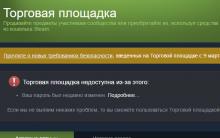
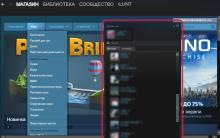
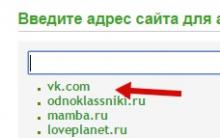
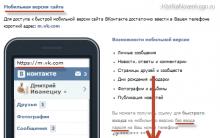
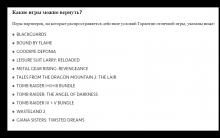
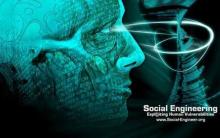




Prolongation of registration of participants in the "Living Classics" competition!
Who deleted me from friends on VKontakte All friends disappeared from the contact
Which operator was the best in Russia
Double cassette tape recorder
"VK" can be closed for a long time